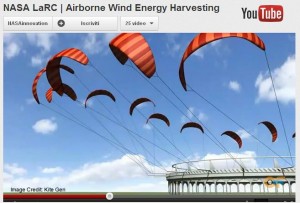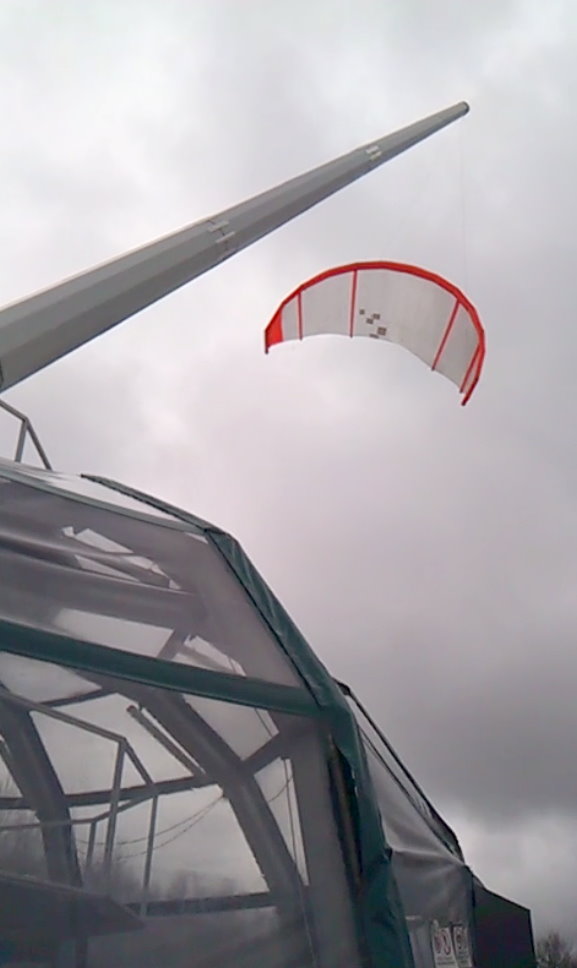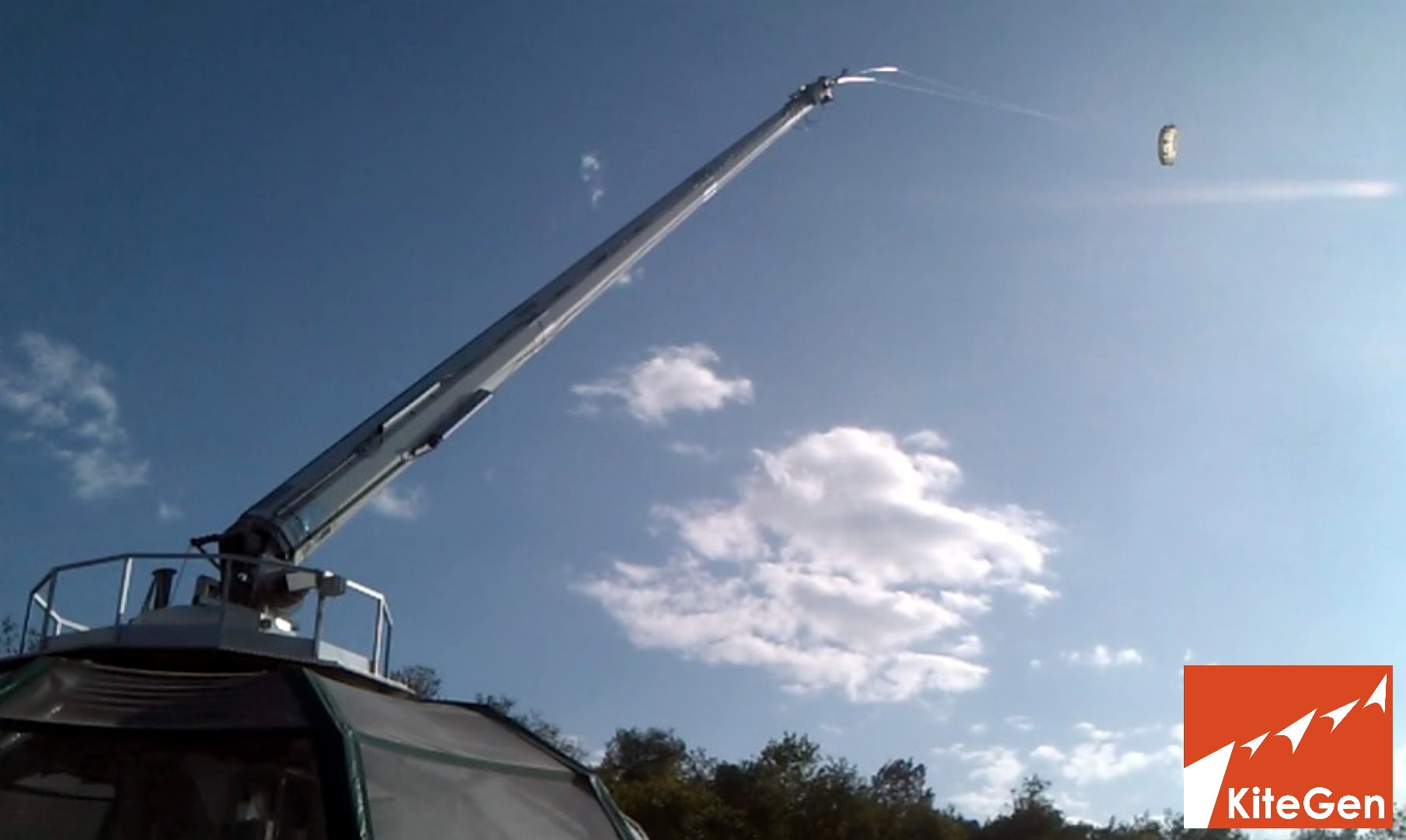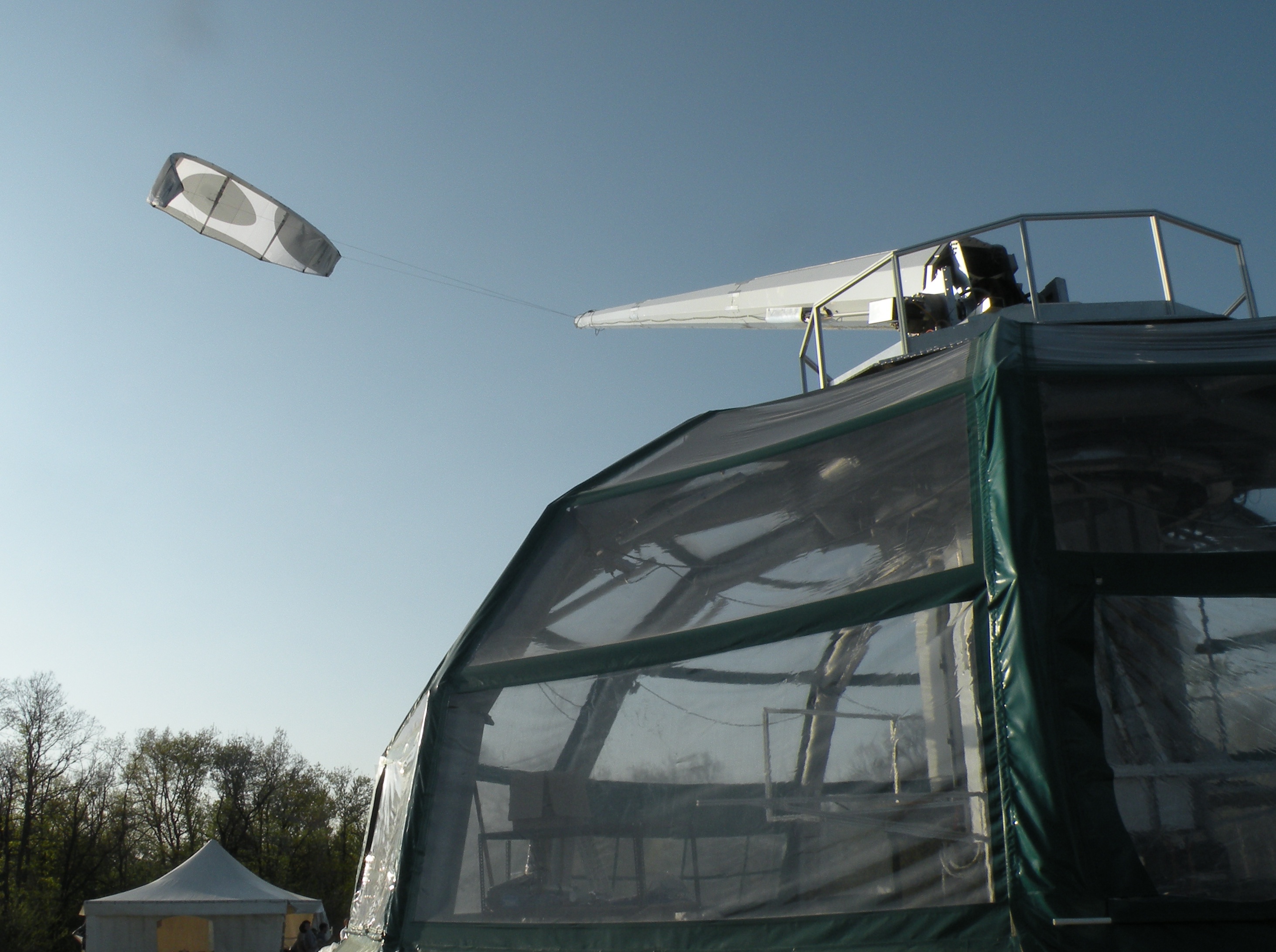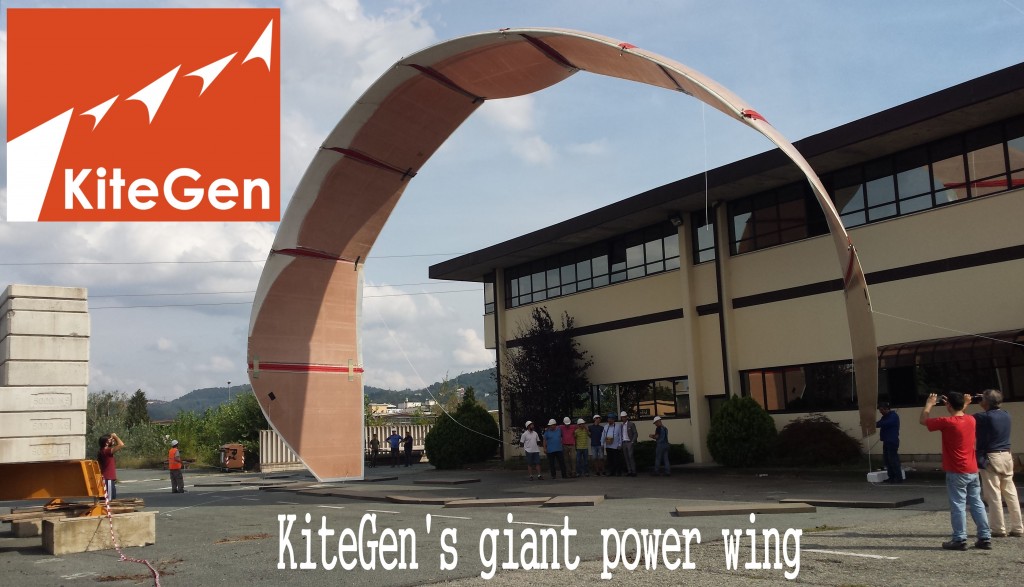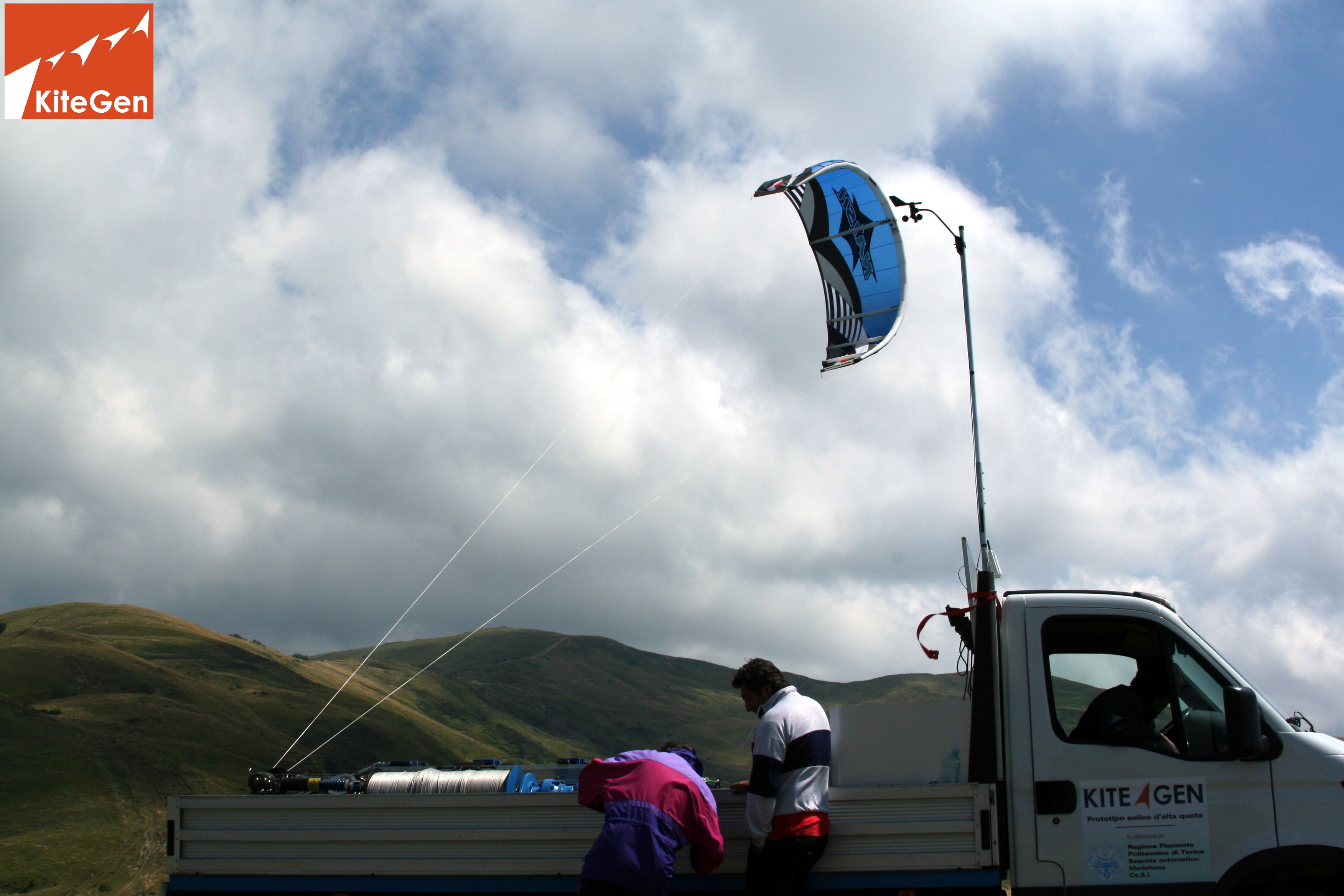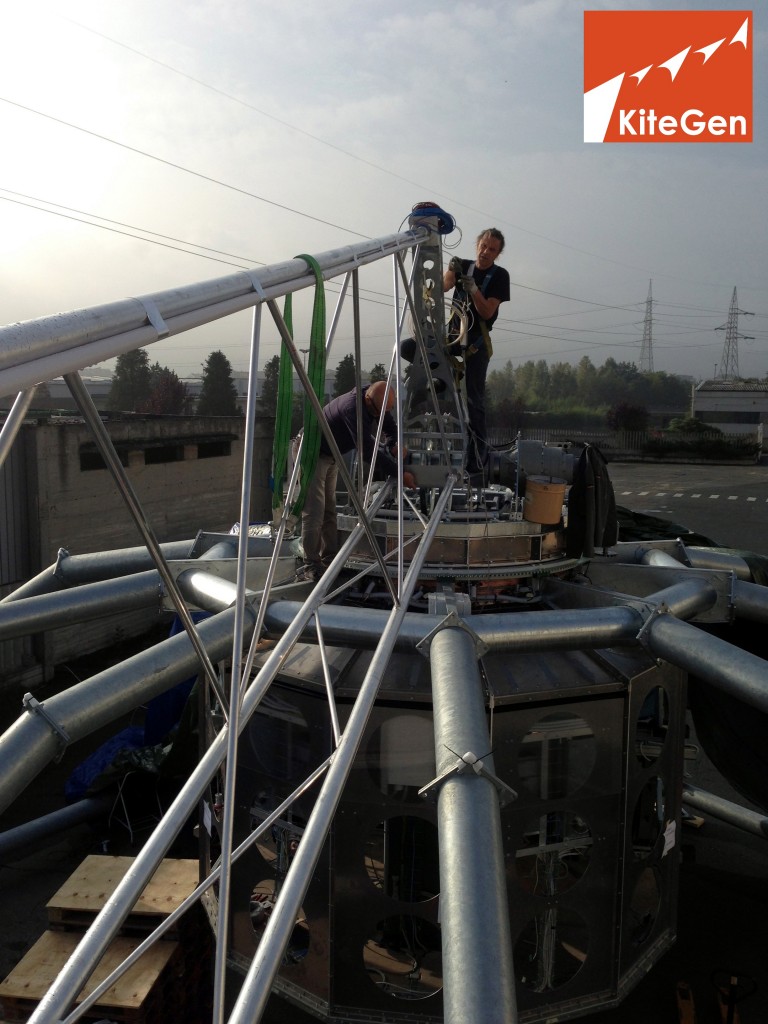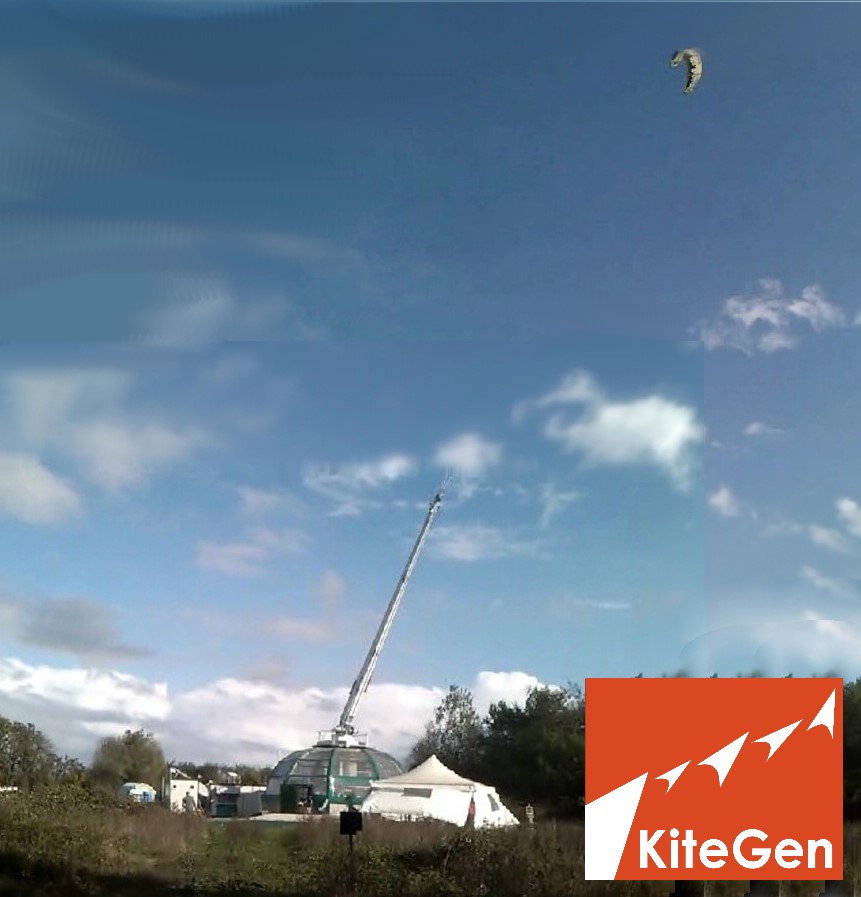NASA Langley Research Center and KiteGen
In this video posted on youtube recently by NASAinnovation a familiar image appears.
Originally written by Massimo Ippolito and Andrea Papini
Mark Moore and David North of the Nasa Langley Research Center show how they are exploring the different solutions to take advantage of the tropospheric wind.
David North announced that wants to experiment the configuration with a single rope and the actuators controls directly on-board the wing.
Although the carousel system, and in some ways also the Stem, are independent from the ropes number, we would like to take the opportunity to explain the reasons of KiteGen on opting for the two ropes system and the on ground actuators.
1) Security of the double rope system
A double rope system has an extremely higher security factor than a single cable system plus the further advantage to permit a faster rewinding phase in critical wind conditions.
Furthermore in a double rope system the two motor-alternators and the drums share the load forces transmitted by the ropes, hence the double system has to support half of the forces and the components are easier to handle and to find on the market.
2) The opportunity given by the double rope system to implement the side-slip manoeuvre for the rewinding stage, using the bimodal flight of the wing
By using a single rope the recovery phase has to be done by changing the angle of the wing, guiding the wing at the border of the wind window, strategies already tested by KiteGen back in 2006.
Such system cannot avoid the lift production by the wing, that causes air resistance which in turn slows the duty cycle and affects the efficiency of the energy production cycle. In addition to that, this system requires a greater expenditure of energy by the motor and drum, which is highly undesirable in an energy production cycle.
Using a double rope system KiteGen demonstrated that by putting the wing in “flag” position, its lift coefficient drops immediately and it is possible to recover the wing in less time and with less energy consumption.
3) The velocity of response from the actuators to the wing.
It is possible to demonstrate that controlling a wing at long distance is possible without having relevant delays. The force transmission goes at the sound velocity along the rope made of “Dyneema® SK75, having E = 107 GPa , ρ = 0.97 kg/dm3 it results in 10.502 m/s”, that is about 30 times the sound velocity in the air.
This delay (0.1 s every 1000 meters of rope) is small enough to be negligible and to null any advantage in a wing with actuators on board.
4) Ropes aerodynamic resistance
The double rope system has a higher drag resistance compared to the single rope system. Such difference is calculated by multiplying the square root of 2 times the drag of one rope. However, thanks to a KiteGen patent the drag resistance of the ropes can be easily and substantially reduced.
5) Ropes twisting
The twist counter is managed by the control system and it is working really well. Even though the control responds promptly even with up to 10 twists, the control can quickly switch from 8 shaped trajectories to ellipses, hence restoring the right flying position.
6) Wing direction control forces
The possibility in the using of control actuators systems on board is strictly related with the dimension of the forces involved.
Small applications for testing and production system in the range of kW can use control actuators systems on board, having limited weight and limited energy consumption.
However, if we consider higher power (MW range), the control systems assume higher weights, higher mechanical forces and stronger auxiliary energy consumption. Using on board control system implies that the actuators are connected to the ground through an electric wire inserted in the ropes, therefore increasing their complexity, weight, costs, drag issues and atmospheric risks.
Further considerations have to be applied at the integration of the control system on the wing, in order to avoid dragging issues and intrinsic inertia transmitted to the wing movement that this solution will generate.
The KiteGen system, by keeping the actuators on ground, has the advantage to avoid all of these issues.
